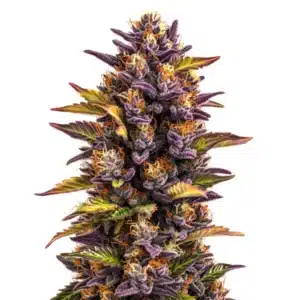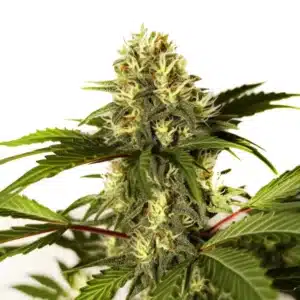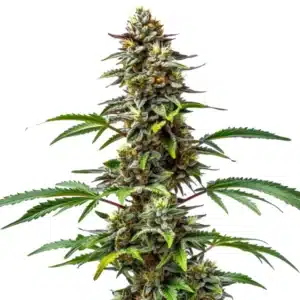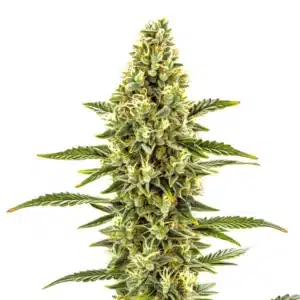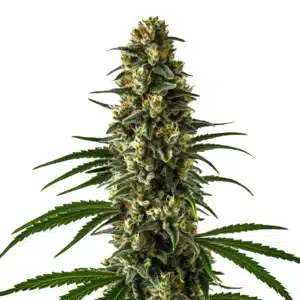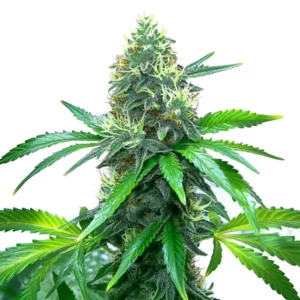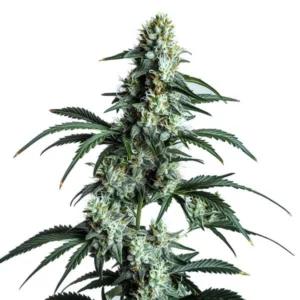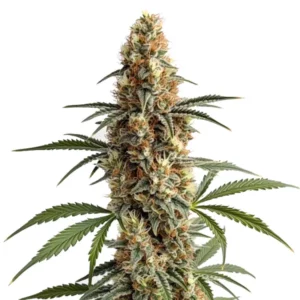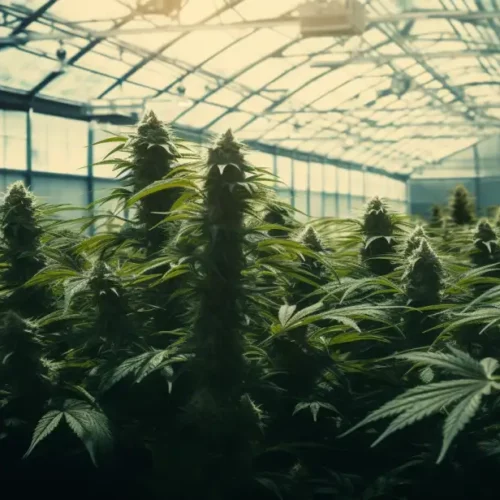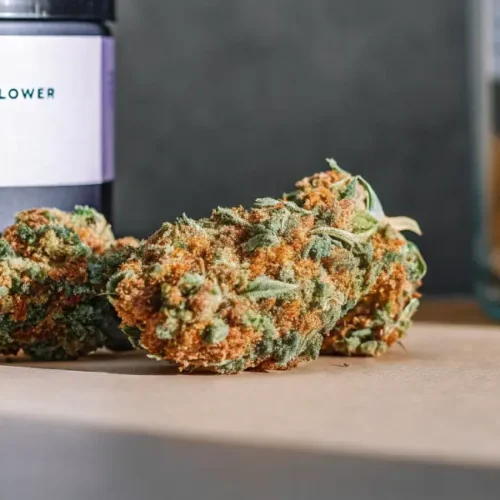
How Do Enzymes Convert CBGA into THCA
When diving into the world of cannabis cultivation, an intriguing question emerges: how do enzymes convert CBGA into THCA? Cannabigerolic acid (CBGA) is known as the “mother of all cannabinoids.” It serves as the precursor to several major cannabinoids, including tetrahydrocannabinolic acid (THCA). This transformation is crucial for both recreational and medicinal cannabis users, as THCA is the non-psychoactive precursor to THC.
Enzymes play a pivotal role in this transformation. They act as biological catalysts, speeding up chemical reactions without being consumed in the process. In the CBGA to THCA enzymatic process, specific enzymes facilitate the conversion. These enzymes are proteins that bind to CBGA and help rearrange its structure to form THCA. Without these enzymes, this conversion would occur very slowly, if at all.
Recommended Strains
Glookies
-
THC: 22% - 25%
-
Type of seed: Feminized
-
Phenotype: 30% Sativa / 70% Indica
-
Flavor: Diesel, Lime
-
Day to flower: 8 - 10 weeks
G13 Autoflower
-
THC: 22% - 24%
-
Type of seed: Autoflowering
-
Phenotype: 10% Sativa / 90% Indica
-
Flavor: Fruity, Herbal, Sweet
-
Life cycle of: 8 - 10 weeks
The biosynthesis pathway of THCA from CBGA involves several steps, each catalyzed by enzymes. These steps ensure that CBGA is efficiently and effectively converted into THCA, which then undergoes further transformations to become THC when heated. For cannabis growers, knowing this process can lead to better cultivation techniques and improved strain quality.
The function of enzymes in CBGA to THCA transformation is not only limited to the speed at which the conversion happens but also to the precision with which it occurs. Enzymes ensure that the conversion is both efficient and specific, avoiding unwanted side reactions that could lead to the formation of other less desirable compounds. This specificity underscores the importance of enzymes in the biosynthesis pathway of THCA from CBGA.
Furthermore, the enzymatic conversion of CBGA to THCA is a reflection of the plant’s natural ability to optimize its resources. By converting CBGA into THCA, the plant can store cannabinoids in a form that is stable and ready for activation upon heating. This natural process of conversion is an evolutionary adaptation that allows cannabis plants to thrive and fulfill their biological roles.
Enzymes Involved in CBGA to THCA Conversion
In the enzymatic conversion of CBGA to THCA, the enzyme of interest is THCA synthase. This enzyme is specific to the cannabis plant and is found in the trichomes, the tiny resin glands on the flowers. THCA synthase catalyzes the conversion of CBGA into THCA by facilitating a reaction that adds a carboxyl group, transforming the molecule’s structure.
Think of THCA synthase as a highly skilled craftsman. It takes the raw material, CBGA, and carefully reshapes it into THCA. This transformation occurs in a matter of seconds, showcasing the efficiency of the enzyme. The presence and activity level of THCA synthase directly influence the THCA content in the final cannabis product.
Another critical aspect of the enzymes involved in CBGA to THCA conversion is their genetic expression within different cannabis strains. The genetic makeup of a particular strain can influence the abundance and efficiency of THCA synthase, thereby affecting the overall THCA yield. This genetic variability is a key factor that growers consider when selecting strains for cultivation.
Additionally, ongoing research continues to explore the possibility of enhancing THCA synthase activity through biotechnological methods. By manipulating the genetic factors that govern enzyme production, scientists aim to develop strains with optimized enzymatic conversion of CBGA to THCA. Such advancements could revolutionize cannabis cultivation, leading to more predictable and potent cannabinoid profiles.
Promos & Deals
Real-Life Examples of Enzymatic Conversion
Consider the strain “Girl Scout Cookies” from Blimburn Seeds. This strain is renowned for its high THCA content, which can be attributed to the efficient action of THCA synthase. Growers aiming for high THCA yields focus on optimizing conditions that favor this enzyme’s activity, like temperature and light exposure.
Another example is the “Blue Dream” strain. Known for its balanced effects, Blue Dream’s THCA levels are a result of robust enzymatic activity. This strain’s popularity among both recreational and medicinal users highlights the importance of knowing how enzymes convert CBGA into THCA.
The “Sour Diesel” strain also provides insights into the enzymatic process. Its distinct aroma and high potency are outcomes of optimal enzyme function, leading to a higher concentration of THCA. For growers, observing these strains offers practical examples of how enzyme activity affects cannabis quality.
In practice, cultivators of these high-THCA strains often experiment with different growing techniques to maximize the enzymatic conversion of CBGA to THCA. By adjusting variables such as soil nutrients and humidity, they can create an environment that enhances enzyme efficiency, resulting in superior cannabis products.
Moreover, the study of these strains provides valuable insights into the optimization of the CBGA to THCA enzymatic process. Knowing how do enzymes convert CBGA into THCA allows researchers to analyze the conditions under which these strains thrive. This knowledge helps develop guidelines for cultivating other high-THCA strains, further contributing to the diversity and quality of cannabis offerings.
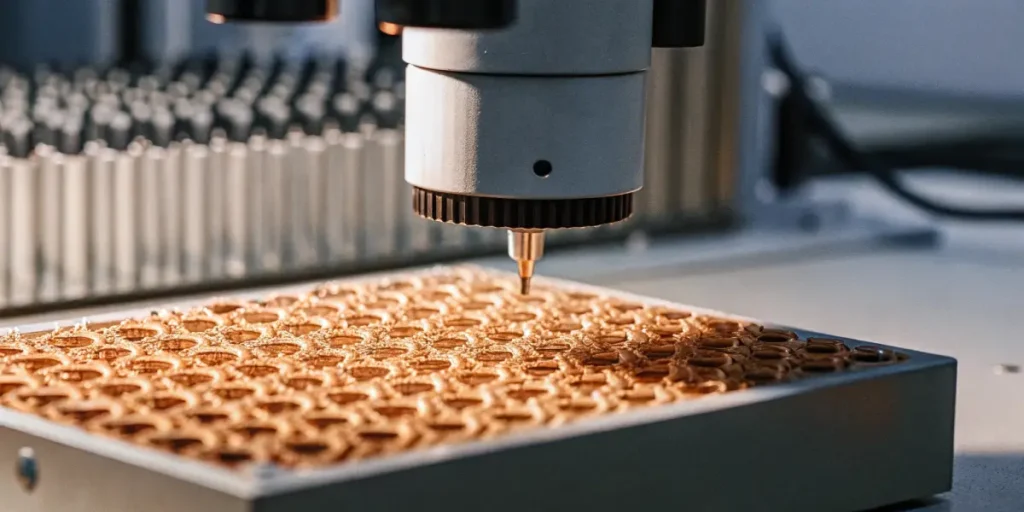
Factors Affecting Enzymatic Conversion
The efficiency of the CBGA to THCA enzymatic process is influenced by several environmental factors. Temperature is a critical factor; enzymes generally operate within a specific temperature range. Too hot or too cold, and their activity can be hindered, affecting the conversion rate.
Light exposure also plays a role. Cannabis plants need adequate light to thrive, and this indirectly affects enzyme activity. Proper lighting ensures healthy plant growth, leading to optimal enzyme function. For growers, managing these environmental conditions can significantly impact the THCA levels in their crops.
Soil quality and nutrient availability are additional factors that can influence the enzymatic conversion of CBGA to THCA. A well-balanced soil provides the essential elements that promote healthy plant growth and robust enzyme activity. Growers often test their soil to ensure it contains the necessary nutrients for optimal cannabis development.
Humidity levels also play a vital role in the enzymatic process. Enzymes require a certain level of moisture to function effectively. If the air is too dry, the enzyme activity can decrease, leading to lower THCA production. Therefore, maintaining an appropriate level of humidity is crucial for maximizing the function of enzymes in CBGA to THCA transformation.
- Temperature control is essential for maintaining enzyme activity.
- Proper lighting ensures optimal plant growth and enzyme function.
- Strain selection influences the enzymatic conversion efficiency.
- Soil quality and nutrients can affect enzyme production.
- Humidity levels should be monitored to support enzyme activity.
FAQs about how do enzymes convert CBGA into THCA
What is CBGA?
CBGA, or cannabigerolic acid, is a foundational compound in cannabis plants. It is often referred to as the “mother of all cannabinoids” because it serves as the precursor to several significant cannabinoids, including THCA, CBDA, and CBCA. In the plant, CBGA is synthesized in the trichomes, where it undergoes enzymatic transformations to form these cannabinoids.
For cultivators, knowing CBGA’s role is crucial as it lays the groundwork for the cannabinoid profile of the final product. By managing factors that influence CBGA levels, growers can enhance the desired cannabinoid concentration in their crops.
CBGA’s importance extends beyond its role as a precursor; it is also a marker for the plant’s health and development. Healthy cannabis plants with optimal CBGA levels are more likely to produce a full spectrum of cannabinoids, offering a richer and more diverse product. This underscores the significance of the initial stages of cannabinoid biosynthesis.
Knowing how do enzymes convert CBGA into THCA provides growers with insights into optimizing the initial stages of cannabinoid production. By focusing on the conditions that support CBGA synthesis, cultivators can influence the entire biosynthesis pathway of THCA from CBGA, leading to improved cultivation outcomes.
How does THCA synthase work?
THCA synthase is a specialized enzyme that catalyzes the conversion of CBGA into THCA. It facilitates a chemical reaction that involves the addition of a carboxyl group to CBGA, rearranging its structure to form THCA. This process occurs rapidly, demonstrating the efficiency of enzymatic activity in cannabis plants.
The presence and activity of THCA synthase are vital for producing high-THCA strains. Growers often select strains with robust THCA synthase activity to achieve desired potency levels. This enzyme’s performance is influenced by environmental conditions like temperature and light.
Research into THCA synthase is ongoing, with scientists seeking to understand the molecular mechanisms that govern its activity. By unraveling the enzyme’s structure and function, researchers aim to develop targeted approaches to enhance its efficiency, further optimizing the CBGA to THCA enzymatic process.
This knowing also opens the door to potential biotechnological applications, where THCA synthase could be harnessed in controlled environments to produce cannabinoids more efficiently. Such innovations could revolutionize the cannabis industry, providing a sustainable and scalable method for cannabinoid production.
What strains are known for high THCA content?
Strains known for high THCA content include “Girl Scout Cookies,” “Blue Dream,” and “Sour Diesel,” all available at Blimburn Seeds. These strains are popular among both recreational and medicinal users due to their potency and effects. The high THCA content in these strains is a result of optimal enzymatic conversion processes.
Growers interested in maximizing THCA levels often choose these strains for cultivation. By optimizing environmental conditions and ensuring proper enzymatic activity, they can produce high-quality cannabis with significant THCA concentrations.
The success of these strains in achieving high THCA levels serves as a benchmark for other cultivators. By studying the environmental and genetic factors that contribute to their potency, growers can mimic these conditions to enhance the enzymatic conversion of CBGA to THCA in other strains.
Furthermore, the popularity of strains with high THCA content reflects consumer preferences for potent and effective cannabis products. This demand drives innovation and research into developing new strains with enhanced enzyme activity, ensuring the continued evolution and diversity of cannabis offerings.
Can environmental factors affect enzyme activity?
Yes, environmental factors significantly impact enzyme activity in cannabis plants. Temperature and light are two critical factors that influence how well enzymes function. Enzymes like THCA synthase have optimal temperature ranges, and deviations can reduce their efficiency.
Proper lighting ensures healthy plant growth, indirectly supporting enzyme activity. For growers, maintaining optimal environmental conditions is essential to maximize the enzymatic conversion of CBGA to THCA and enhance the overall quality of their cannabis crops.
Besdies to temperature and light, the availability of carbon dioxide also plays a crucial role in enzyme activity. Carbon dioxide is a key component of photosynthesis, which in turn supports the plant’s overall metabolic functions, including enzyme production and activity. Ensuring adequate carbon dioxide levels can therefore enhance the function of enzymes in CBGA to THCA transformation.
Moreover, stress factors such as pests, diseases, and drought can negatively impact enzyme activity by diverting the plant’s resources towards defense mechanisms. By managing these stressors, growers can create a stable environment that supports the efficient enzymatic conversion of CBGA to THCA, leading to better crop yields and quality.
Why is THCA important for cannabis users?
THCA is important for cannabis users because it is the precursor to THC, the compound responsible for the psychoactive effects of cannabis. While THCA itself is non-psychoactive, it converts to THC when heated, such as during smoking or cooking. This transformation is vital for those seeking the therapeutic or recreational effects associated with THC.
For medicinal users, THCA also offers potential benefits without the psychoactive effects. It is being studied for its anti-inflammatory, neuroprotective, and anti-emetic properties. Knowing how enzymes convert CBGA into THCA helps users and growers appreciate the complex processes that contribute to cannabis’s effects.
The function of THCA in cannabis products extends beyond its conversion to THC. It is believed to interact with other cannabinoids and terpenes, potentially contributing to the entourage effect. This synergy between compounds can enhance the overall therapeutic benefits of cannabis, making THCA a valuable component for users seeking a holistic approach to wellness.
As research into THCA’s properties continues, new applications and benefits are likely to emerge. Knowing the enzymatic conversion of CBGA to THCA is therefore not only relevant for maximizing THC production but also for exploring the full range of therapeutic possibilities that THCA and cannabis as a whole can offer.



